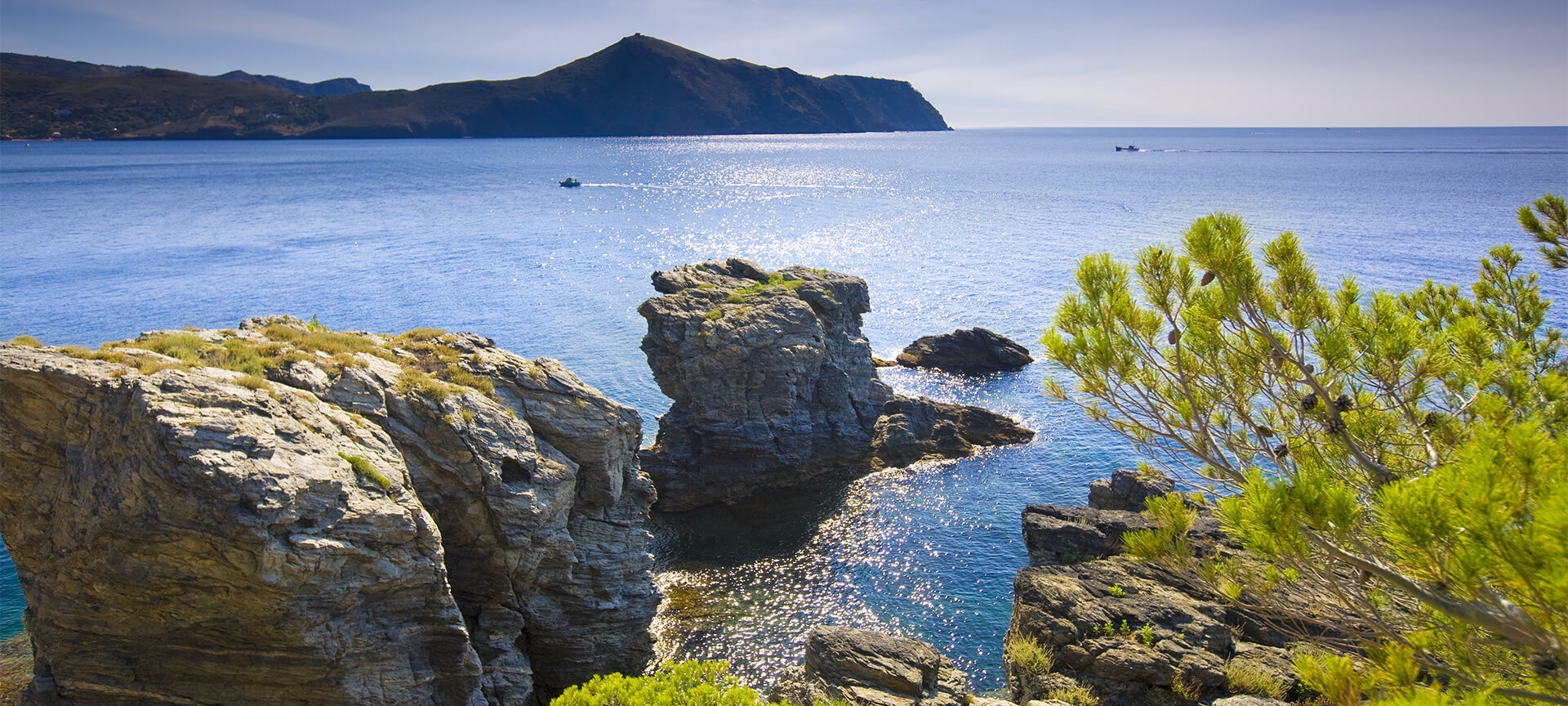
Cap de Creus nature reserve

The north-east end of the Iberian Peninsula
The Park, with its diverse orography, is set at the north-east end of the coastline.
The Reserve combines different ecosystems which give it a vast range of representative species.It houses a land and a sea area.The highest point of the massif can be found at Sant Salvador peak, 670 metres up.The vegetation on Cap de Creus is conditioned by the strong marine influence, the rugged orography and the abundance of rocky outcrops. Trees are not very frequent, there are pockets of aleppo pines and cork oaks, and to a lesser extent holm oaks. In some valley bottoms, we come across elms, ash trees, alders, hazel trees and willows. Scrub occupies the majority of the surface (mastic trees, junipers, heather and rock roses). The most outstanding species of fauna are those of the group of sea birds and reptiles.Among the reptiles and amphibians, the common toad, oscellated lizard and Mediterranean tortoise are worthy of note. The most representative birds of prey include Bonelli's eagle, the peregrine falcon, and the eagle owl. Of the sea birds, seagulls and terns, Balearic shearwaters and shags deserve a mention. Lastly, and no less important, is the vast wealth of species in the sea.
Cap de Creus nature reserve
Palau de l’Abat (Monestir de Sant Pere de Rodes)
17489 Cadaqués, Girona (Catalonia)
Girona (Catalonia):
- Cadaqués
- Llançà
- Pau
- Palau-Saverdera
- Port de la Selva, El
- Roses
- Selva de Mar, La
- Vilajuïga
Activa JS
What you need to know
-
Cultural information
The cultural setting of Cap de Creus is first class.In the towns surround the Reserve, include Cadaqués, Llançá, El Port de la Selva, Roses and others, visitors will discover a rich artistic and monumental heritage.The nearby area also offers the important Sant Pere de Roda monastery, dating back to the 10th century.
-
Environmental information
Cap de Creus consists of a rocky stretch of coastline, the mountainous inland area, nearby islands and isles and a strip of sea.It lies to the north of Roses bay.The Reserve is a complex orography that includes three Nature Spots of National Interest (to the north of Cap Gros-Cap de Creus, to the south of Punta Falconera-Cap Norfeu and to the west of Serra de Rodes).
-
Information for visits
Access is unrestricted. However, we recommend that you visit the Information Points in the nearby towns, particularly those in Cadaqués and Port de la Selva.
Travel plans for inspiring you





